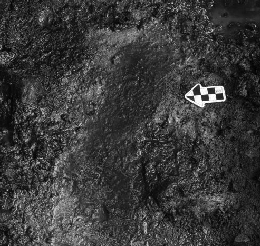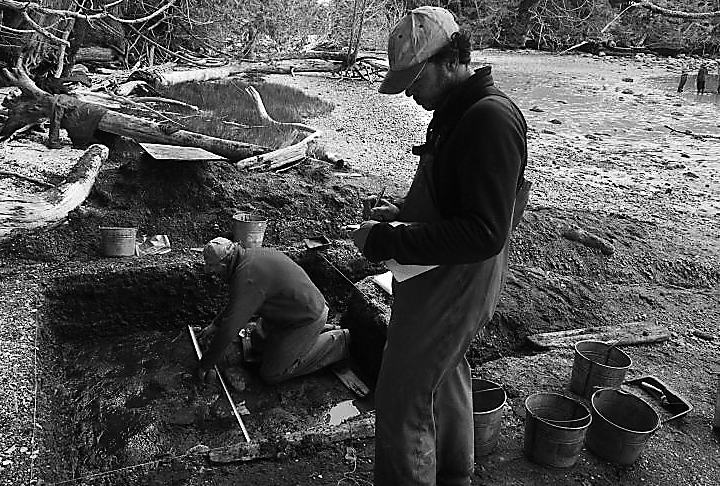

WHETHER it was a family day out at the beach, complete with prehistoric equivalent of a bucket and spade, we’ll never know, but one thing is for sure: about 13,000 years ago a little band of humans were pottering about on a shore in western Canada. Researchers have unearthed 29 footprints in a layer of sediment on the shoreline of Calvert Island in British Columbia. Between 11,000 and 14,000 years ago, as the world was coming towards the end of the last ice age, the sea level there was 2 to 3 meters lower than today. While it is not clear quite how many humans were responsible for the tracks, the team said there are at least three different sizes of footprints, including one set that appeared to belong to a child. Writing in the journal Plos One, the team described how they began excavations on the island in 2014, noting that nearby there were shell-containing manmade rubbish dumps, or middens, which dated to up to 6,100 years ago, as well as chipped stone tools and manmade arrangements of stone boulders on the seashore. The first human footprint was unearthed 60 centimeters below the surface of the current beach, pressed into a layer of brown clay and filled with black sand and gravel. Fortunately, small pieces of wood were discovered in the heel of the print, and were radiocarbon-dated to just over 13,000 years ago. The team returned during 2015 and 2016 to carry out further excavations, uncovering another 28 footprints. In some cases it was possible to see the impressions of individual toes and arches of the feet. Measurements of 18 of the tracks revealed they were made by at least three different individuals. The new research adds weight to the idea that humans moved along glacier-free areas of land along the coast, between the ice and the sea — areas known to have provided a refuge for various plants and animals. Prof. Nick Ashton, curator of Palaeolithic and Mesolithic collections at the British Museum, welcomed the findings. “It supports the idea that the first peopling of the Americas was from eastern Asia at a time of lower sea levels, when the landmasses were larger, but probably with the assistance of sea-faring vessels. The footprints provide a very tangible link to the first Americans.” (SD-Agencies) | 
